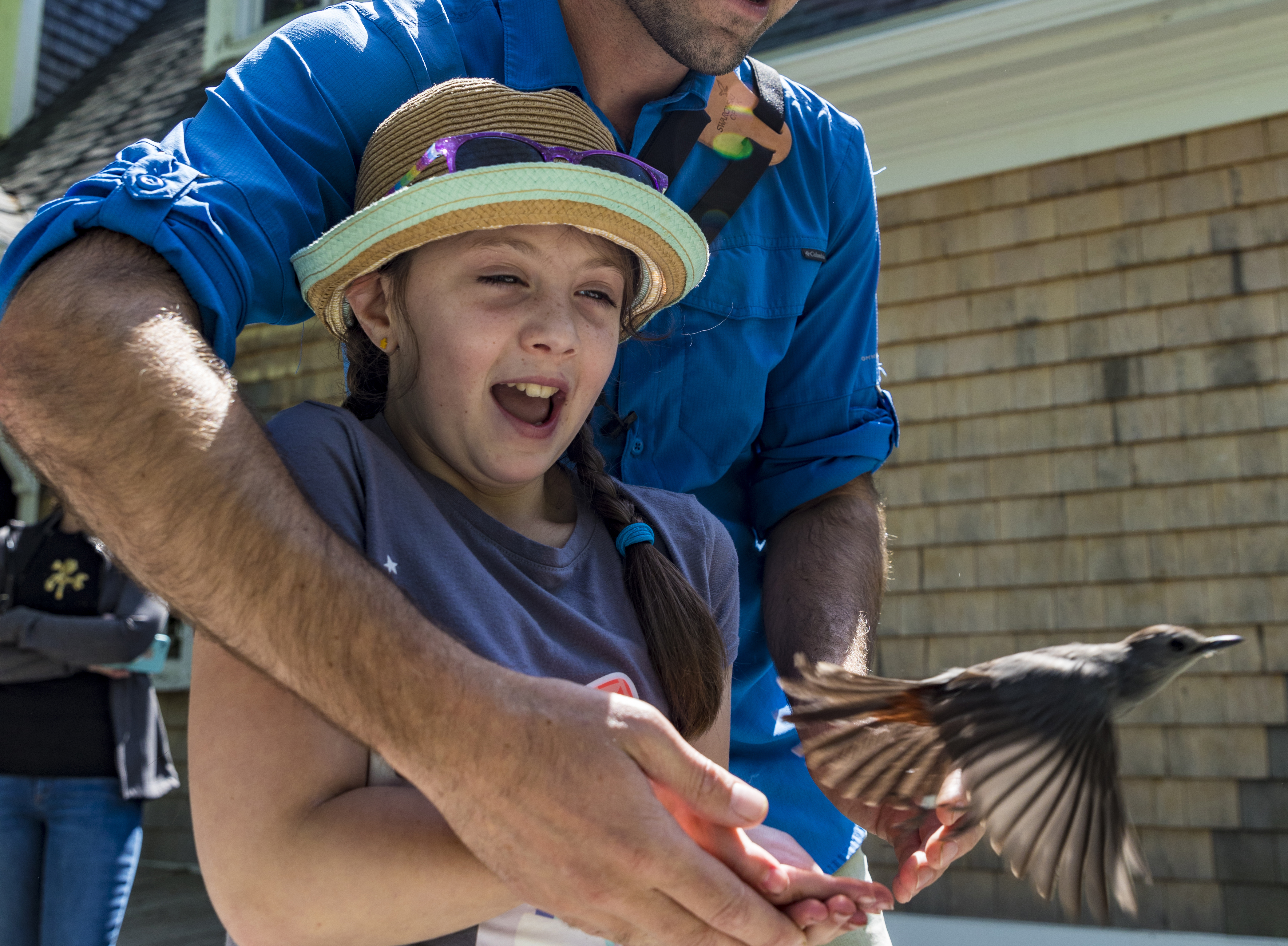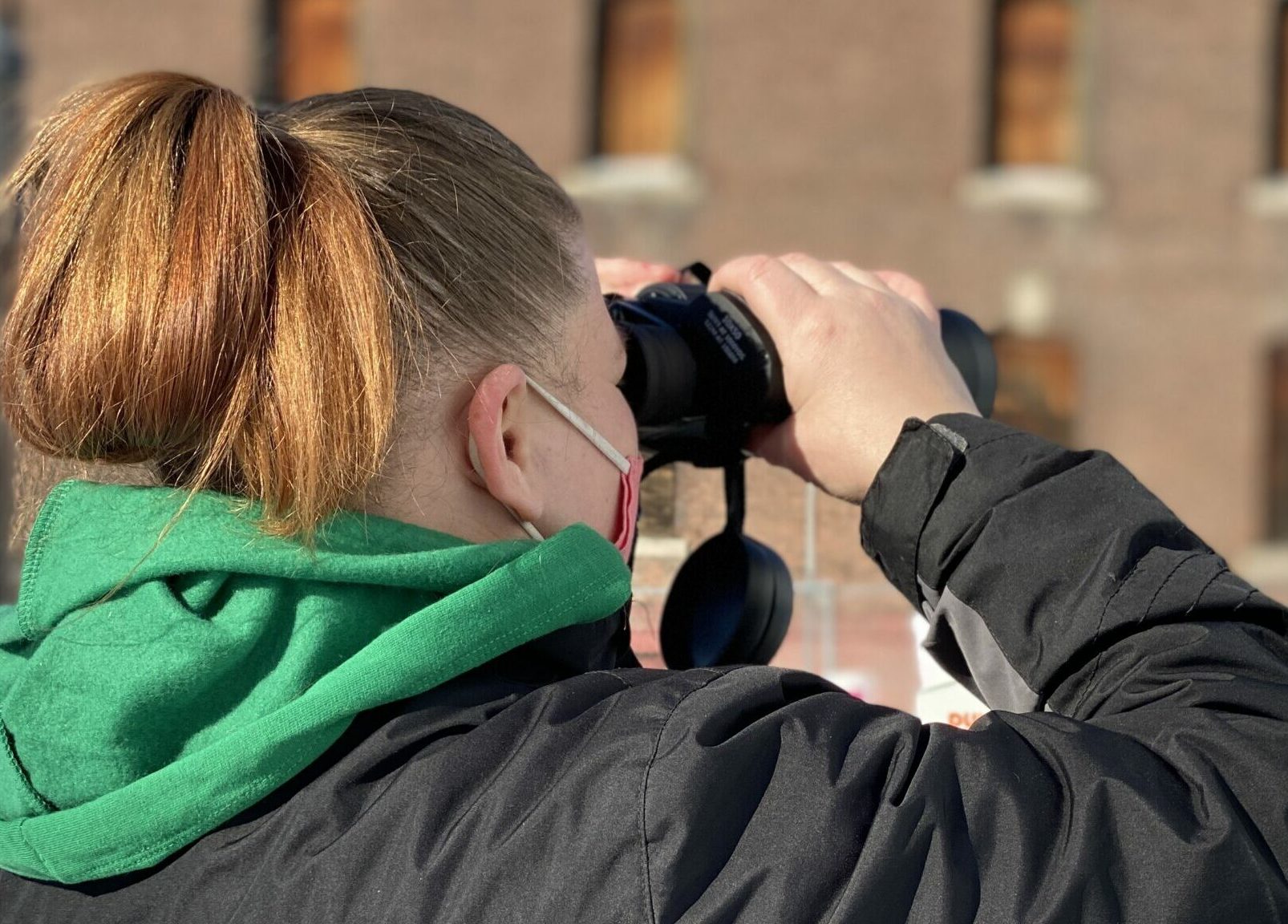By Evan Dalton
For those who feed birds in the northeast, perhaps the pinnacle of backyard birding is attracting Eastern Bluebirds (EABL) to your yard. Many try, very few succeed…why? I have hosted many backyard birding and bird-feeding programs over the years and I can share with you what I have learned.
Attracting birds to your yard is vastly different depending on the time of year. In the breeding season, many birds won’t visit feeders. With the exception of American Goldfinches, local birds feed their young invertebrates. Thus, the cardinal you see at your feeder in July is either seeking a respite from tending its young or it doesn’t have a nest (i.e. it failed to find a mate or its nest was destroyed). If you are to attract birds to your yard during the breeding season, you have to provide the correct nesting substrate (in the case of an EABL, a nesting box of the appropriate size) in the correct habitat. Bluebirds prefer a nesting box (or natural hole in a tree!) that is situated close to a large open area where they can forage for food for their young. Favorite summer haunts for EABL include athletic fields, golf courses, large lawns, and agricultural fields. Unless your backyard nesting box is in an open area, it might be hard to attract nesting bluebirds.

Attracting backyard birds in the winter is a different story. As birds start to migrate south in the fall, they change diets and switch from eating invertebrates to eating mostly berries – the most abundant food/fuel source during migration. Research on migrating birds captured at Manomet revealed that birds prefer native berries (more info here). Most insectivorous birds can make the switch to berries, but not all can then switch diets again and eat seeds once the berries run out. Winter feeder visitors like cardinals, sparrows finches, chickadees, and titmice are able to consume seeds with their powerful bills. Other wintering species like Brown Creepers and the diminutive Golden-crowned Kinglet eke out a modest existence consuming overwintering insects and their eggs found in the bark of trees and other crevasses.
Thrushes like American Robins, Hermit Thrushes and Bluebirds gravitate towards winter berries. Robins form large roaming flocks (often with EABL and/or Waxwings mixed in) that can move into your yard and clear out your crabapple, winterberry or American holly berries in a matter of hours, often once the berries have been sweetened by a few deep freezes. Some Bluebirds may be attracted in the winter by offering berry alternatives like suet or mealworms (suet, in particular, will attract many other species including woodpeckers, and the occasional overwintering Carolina Wren, Hermit Thrush, Gray Catbird or warbler). Once they find a food source they like, small flocks of EABL can become regular visitors to a backyard feeder setup.
People can also help make their backyard more enticing to EABL by offering winter shelter for them. In the dead of winter, EABL are sometimes seen entering birdhouses. Although they might be scouting out potential nesting sites, they are probably more likely looking for a place they can spend the night. EABL will, in fact, roost in small groups in cavities and bird houses overnight. If you see them entering and exiting nesting boxes out of season, this is probably what the birds are scouting for!
Of course, if you’re interested in learning more about how to attract more birds to your yard, I suggest you visit a local bird feeding shop, like Wild Birds Unlimited. We have partnered with the WBU franchise in Hanover for several years. Their staff are extremely knowledgeable and passionate about all things birds.
Best in Birds,
Evan
This spring 2022 migration season, for the first time in Manomet history, you can adopt one of the mist nets we use to safely capture birds for research! By adopting a mist net in your name or a loved one’s, you will support critical bird and ecology research and help educate the next generation of conservationists.





 Back to all
Back to all

